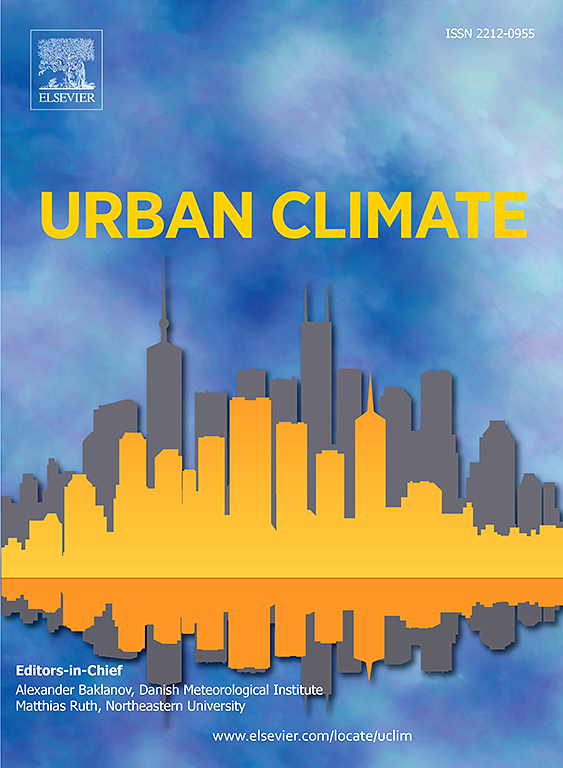Discovering morphological impact discrepancies on thermal environment among urban functional zones using essential urban land use categories and machine learning
IF 6
2区 工程技术
Q1 ENVIRONMENTAL SCIENCES
引用次数: 0
Abstract
The urban heat island effect has undermined the livability of cities. Previous studies have shown that Urban Functional Zones (UFZs) exert impacts on the thermal environment. However, the classification methods of UFZs haven't been standardized, which limits the generation of universal conclusions. This study employs the essential urban land use categories (EULUC) mapping method to delineate UFZs in the central area of Tianjin, China, and utilized multiple regression methods to analyze the correlation between urban morphology indicators and land surface temperature (LST) in summer and winter, and explored the differences in LST and its influencing factors across UFZs. The principal findings are as follows: (1) The EULUC classification system represents an effective method for delineating UFZs, with a classification accuracy of up to 92.8 %. (2) Both in summer and winter, commercial zones demonstrate the highest levels of LST, while open space zones exhibit the lowest levels. (3) The impact of urban morphology indicators on LST varies across UFZs, and these indicators demonstrate threshold effects. LST in residential zones and commercial zones was found to be most strongly influenced by urban morphology indicators, among which building footprint density was the most significant indicator in both summer and winter. This study presents a methodological framework for associating UFZs with thermal environments based on the EULUC, aiming at providing a practical guide for the spatial configuration of UFZs and the urban morphology indicators setting of different UFZs in planning practice.
利用城市基本土地利用类别和机器学习发现城市功能区对热环境的形态影响差异
城市热岛效应破坏了城市的宜居性。已有研究表明,城市功能区对热环境具有一定的影响。然而,ufz的分类方法尚未标准化,这限制了普遍结论的产生。本研究采用城市基本土地利用类别(EULUC)作图方法圈定天津市中心城区城市用地,利用多元回归方法分析城市形态指标与夏季和冬季地表温度(LST)的相关性,探讨城市地表温度在城市用地区内的差异及其影响因素。研究结果表明:(1)EULUC分类系统是一种有效的ufz划分方法,分类准确率可达92.8%。(2)夏季和冬季,商业区地表温度最高,开放空间最低。(3)城市形态指标对城市地表温度的影响在不同区域存在差异,且表现出阈值效应。住区和商业区的地表温度受城市形态指标的影响最强烈,其中建筑足迹密度在夏季和冬季都是最显著的指标。本研究提出了基于EULUC的城市热环境关联方法框架,旨在为城市热环境的空间配置和不同城市热环境的城市形态指标设置提供实践指导。
本文章由计算机程序翻译,如有差异,请以英文原文为准。
求助全文
约1分钟内获得全文
求助全文
来源期刊

Urban Climate
Social Sciences-Urban Studies
CiteScore
9.70
自引率
9.40%
发文量
286
期刊介绍:
Urban Climate serves the scientific and decision making communities with the publication of research on theory, science and applications relevant to understanding urban climatic conditions and change in relation to their geography and to demographic, socioeconomic, institutional, technological and environmental dynamics and global change. Targeted towards both disciplinary and interdisciplinary audiences, this journal publishes original research papers, comprehensive review articles, book reviews, and short communications on topics including, but not limited to, the following:
Urban meteorology and climate[...]
Urban environmental pollution[...]
Adaptation to global change[...]
Urban economic and social issues[...]
Research Approaches[...]
 求助内容:
求助内容: 应助结果提醒方式:
应助结果提醒方式:


